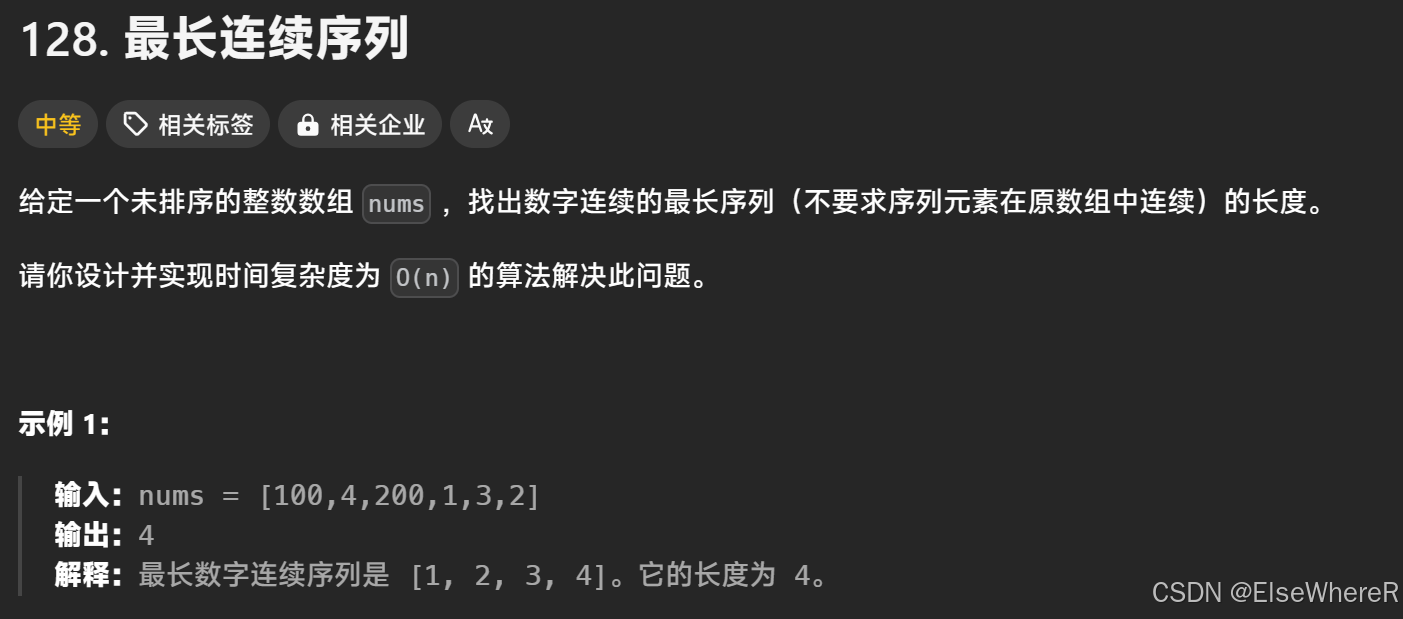*************
c++
topic: 128. 最长连续序列 - 力扣(LeetCode)
*************
See the topic:

when it comes to array, use sort first.
as is mentioned before, sort is a standard library in c++. Here review the usage of sort again
The default is to sort in ascending order:
#include <algorithm>
#include <vector>
#include <iostream>
int main() {
std::vector<int> vec = {4, 2, 5, 3, 1};
std::sort(vec.begin(), vec.end());
for (int num : vec) {
std::cout << num << " ";
}
return 0;
}and the result is
1 2 3 4 5however, if I write some lambda code, it will returen as wish:
#include <algorithm>
#include <vector>
#include <iostream>
bool compare(int a, int b) {
return a > b; // 降序排序
}
int main() {
std::vector<int> vec = {4, 2, 5, 3, 1};
std::sort(vec.begin(), vec.end(), compare);
for (int num : vec) {
std::cout << num << " ";
}
return 0;
}the result is:
5 4 3 2 1and in this case, just use the basic function, In ascending order.
if the nums is empty, just return 0;
class Solution {
public:
int longestConsecutive(vector<int>& nums) {
int n = nums.size();
if (n == 0) return 0;
// do sth. here
}
};then comes sort and initialize the max length and current length.
class Solution {
public:
int longestConsecutive(vector<int>& nums) {
int n = nums.size();
if (n == 0) return 0;
// initialize the length
// use sort
sort(nums.begin(), nums.end());
int max_length = 1;
int current_length = 1;
// do sth. here
}
};if nums[i] == nums[i - 1], continue;
and if nums[i] == nums[i - 1] + 1; current length = current length + 1;
this is eazy to turn into the code:
class Solution {
public:
int longestConsecutive(vector<int>& nums) {
int n = nums.size();
if (n == 0) return 0;
// initialize the length
// use sort
sort(nums.begin(), nums.end());
int max_length = 1;
int current_length = 1;
for (int i = 1; i < n; ++i) {
if (nums[i] == nums[i - 1]) {
continue;
}
if (nums[i] == nums[i - 1] + 1) {
current_length += 1;
} else {
max_length = max(max_length, current_length);
current_length = 1;
}
}
return max(max_length, current_length);
}
};